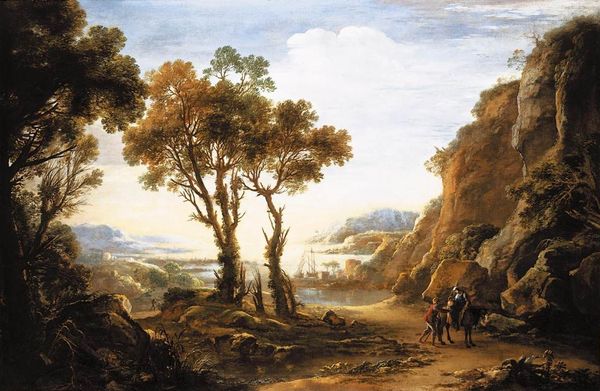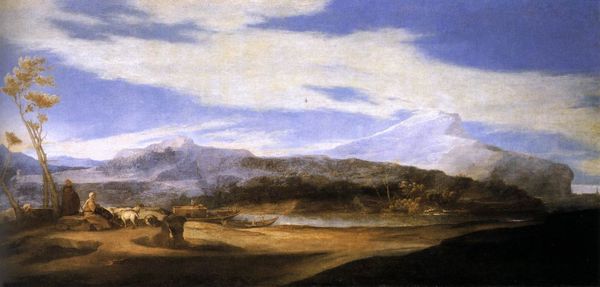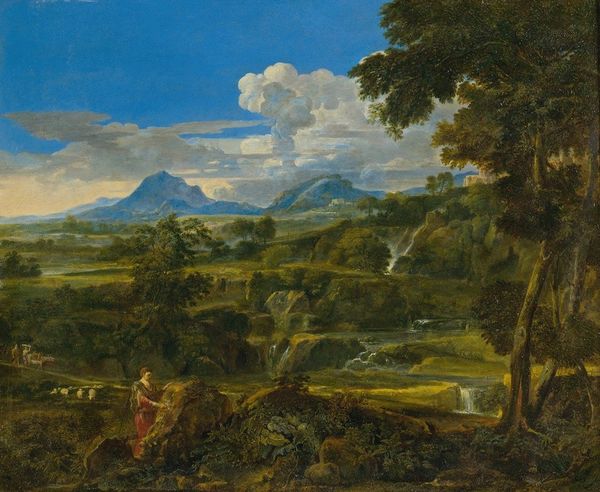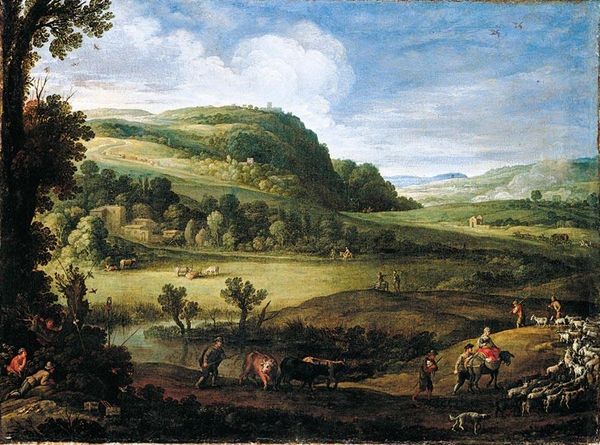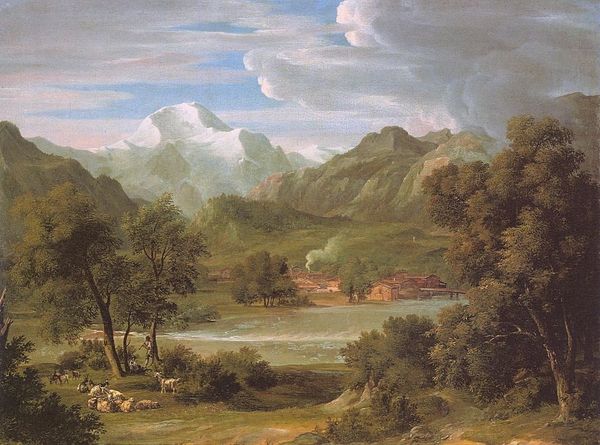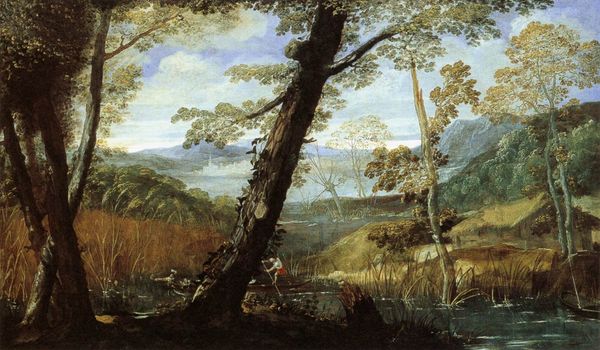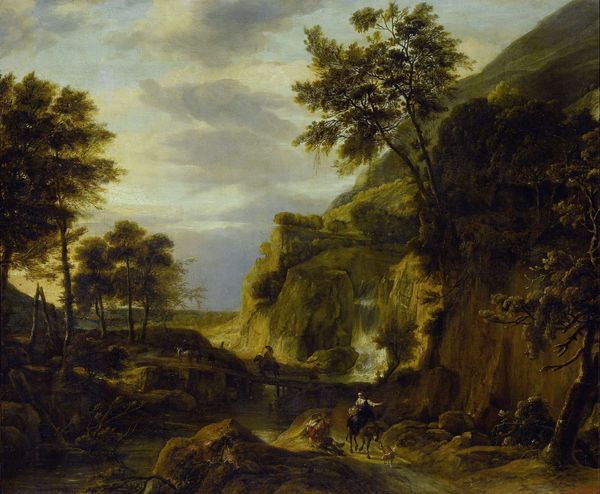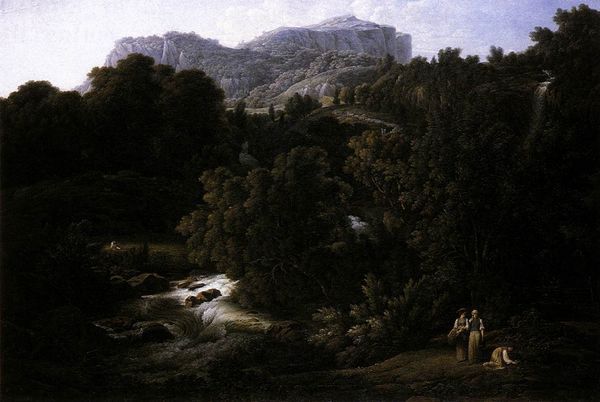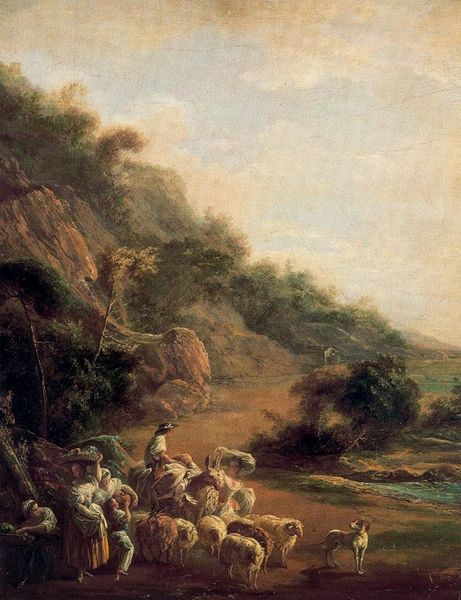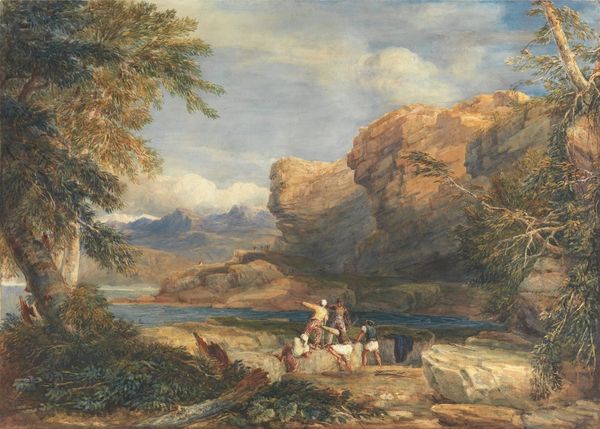
Copyright: Public domain
Curator: Immediately striking is the almost theatrical layering of this landscape—dark foreground, gradually lighter mid-ground, and then, the stark, pale mountains. Editor: And a palpable sense of industry! You feel the presence of labor everywhere. It speaks to the relationship between the people and the land, doesn’t it? We see figures throughout who are working. Curator: Precisely! Let me introduce Joseph Anton Koch’s oil painting, "The Upland near Bern," from 1816. It is interesting how the artist blends historical painting conventions into this landscape, giving it this almost staged feeling. Editor: Koch’s use of oil certainly enhances the textures; it seems to add a certain depth and heft. You notice how the paint is built up, creating rough areas but in some parts, especially the light filtering through the trees, a lot of areas that are really thinly washed-out glazes. Curator: Yes, consider the compositional strategy! The careful arrangement leads the eye, with clear structuring of different parts within the painting; foreground is dominated by rustic details with the activities of ordinary people that makes the scale and the background grandeur seem so vast. This juxtaposition establishes an interesting symbolic narrative between nature's imposing size and the minute figure of humanity that is always challenging itself. Editor: I see it not as minute but intrinsic, and intertwined. Look how Koch uses pigments grounded in earthy minerals – ochres and umbers and the labor to render these majestic alps but to me also captures the daily struggles of the community. There is no artificial boundary; instead, you sense the labor embedded in our interaction with the landscape. Curator: That is a valid point! Viewing it that way shifts the focus to the tangible, daily existence rather than some aestheticized idealization of nature that, at least consciously, feels very modern! Editor: Precisely! Looking closer you start to recognize so many material choices reflect back human touch, our relationship. Curator: So, Koch, intentionally or not, has provided us with quite a dialogue—one on composition and on the hands-on crafting of a world and our relationship to the natural world around us. Editor: Indeed. We witness not just a scenic landscape, but one that acknowledges our contribution to nature—and the cost involved in achieving this harmony.
Comments
No comments
Be the first to comment and join the conversation on the ultimate creative platform.
